How to bind carpet edges at home
Want to Learn to bind carpet edges at home? I’m currently modifying the size of my existing carpet runner to be a smaller width to fit my narrow staircase.
To do this, I’ll need to trim and bind the carpet edges. Rug binding is a fairly simple process. There are a few ways in which you can create a custom rug, but today I’ll be tackling one of the simplest.
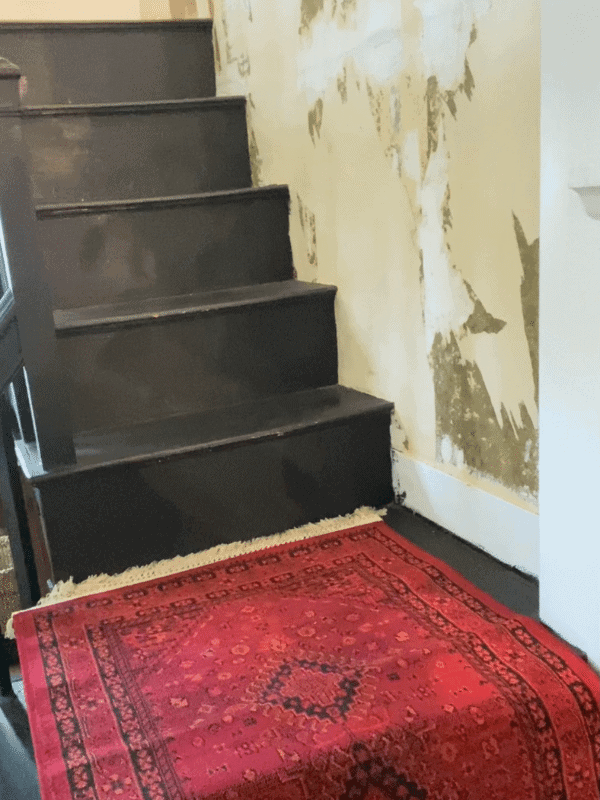
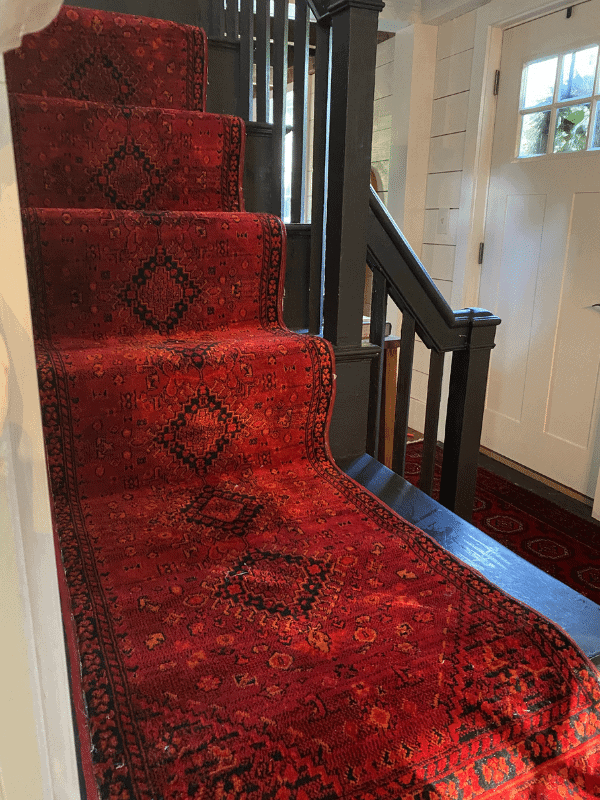
Can you bind carpet yourself?
Short answer: Yes! There are a few solutions to finish carpet edging, but the simplest is DIY carpet binding. Believe it or not, this is actually a diy project you can take on.
No longer do you have to send area rugs away to a carpet binder, to create a custom area rug. This process can be lengthy and expensive.
It may seem intimidating, but the process is actually quite simple and can leave you with beautiful, high-end results. The best part…it requires no sewing!
Here, I’ll share the tools and steps you need to confidently bind carpet edges at home – much more quickly, and for much cheaper, than a professional job.
How to Bind Carpet Edges at Home
Binding material and tools needed:
- Double-Sided Carpet Tape
- Carpet Binding Strip
- Carpet Cutter or utility knife
- Scissors
- Hot Glue Gun
- Hot Glue Sticks
- Safety Gloves
- Small Wood Block or Brick (Optional)
- lighter
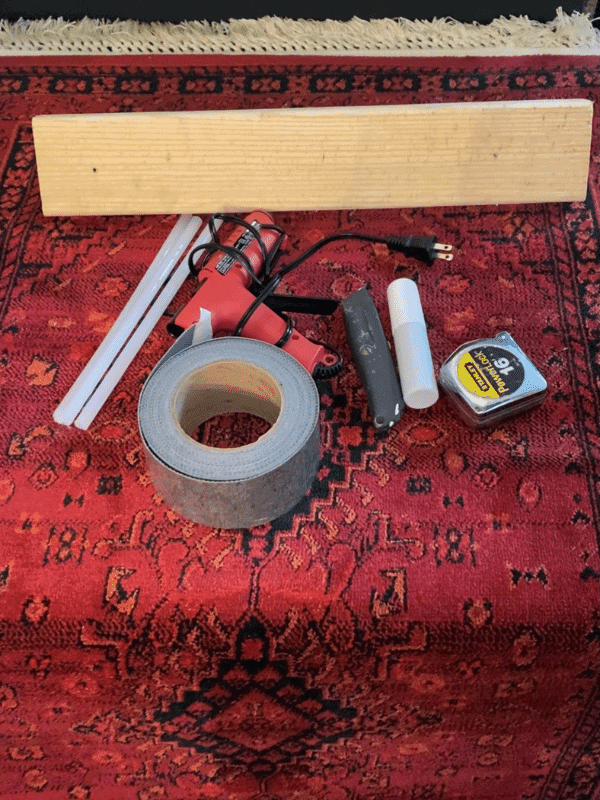
Want to shop the supplies for this project? *These links are affiliate links and I make a small comission when used to purchase said items. Thanks so supporting the brands that support this blog of mine!
How do you get a carpet runner to stay in place?
Depending on where a carpet runner is being placed in your home will determine how to keep t in place. Sometimes simply adding a non-split pad will keep in in place.
High traffic areas are a little different. You might need something a little more stable. Try using carpet grippers in each corner like gorilla glue’s patented grippers (Affiliate).
If you are installing a carpet runner on your stairs, it will take a little more to get your runner to stay in place. You’ll need carpet adding, carpet tape, a staple gun, and most likely carpet tacks.
How to keep your newly attached binding to your stair runner?
You can use a commercial sewing machine, a portable binding machine, or carpet tape to either bind your edges or reattach your new binding.
Or, to simplify the process further, the carpet tape and carpet binding can be swapped out for a self-adhesive, two-in-one tape and binding.
Also known as binding tape. Amazon sells a few options. The only challenge would be to find a color that matches your current runner. Unless you wanted to use a contrasting color like black binding on a red rug.
What is carpet binding tape?
Carpet binding tape is carpet tape and carpet binding all in one. Instabind (Affiliate) is an easy way to create a custom carpet using an existing rug or carpet remnants.
With Instabind you can keep the raw edges of your rug and simply attach the binding tape to create a new rug!
This makes binding carpet edges simpler and quicker because it can be done in fewer steps! Instabind has a very clean looking rope edge, and at a cost of less than $65 for a 54-linear foot per roll, it’s still much cheaper than having rugs professionally bound.
Preparing to Bind Carpet Edges
First, prepare the carpet’s edges for binding by measuring the new width and length of your current rug.
Next would be to trim the edges of the carpet. Be sure you are cutting in a straight line. Carefully use a box cutter or carpet cutter to neatly trim the edges of your carpet.
To help with loose fibers and prevent frayed edges, be sure to use a lighter along the each cut side. This will create clean lines which will help attaching the binding much easier.
Be sure to protect your workspace and hands when using a cutting tool! Once the lines are straight and even, you can begin attaching the binding strip to the edges of the rug.
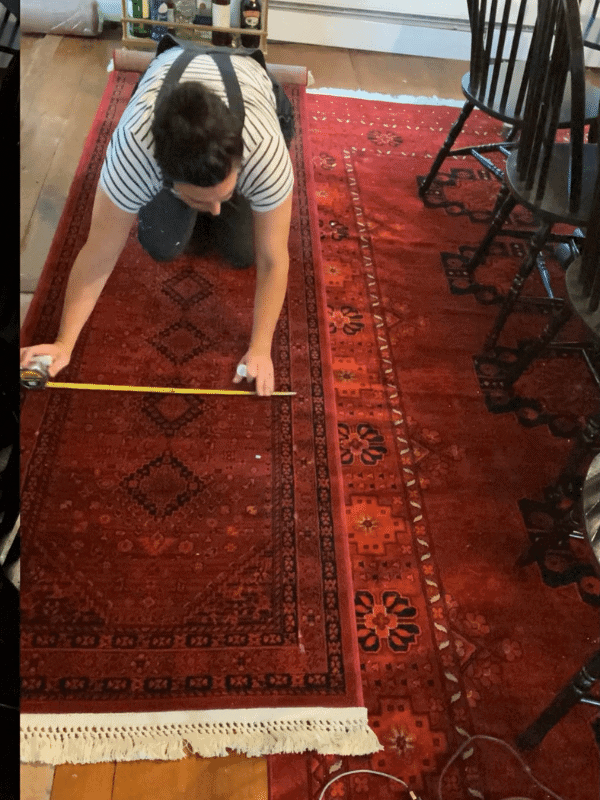
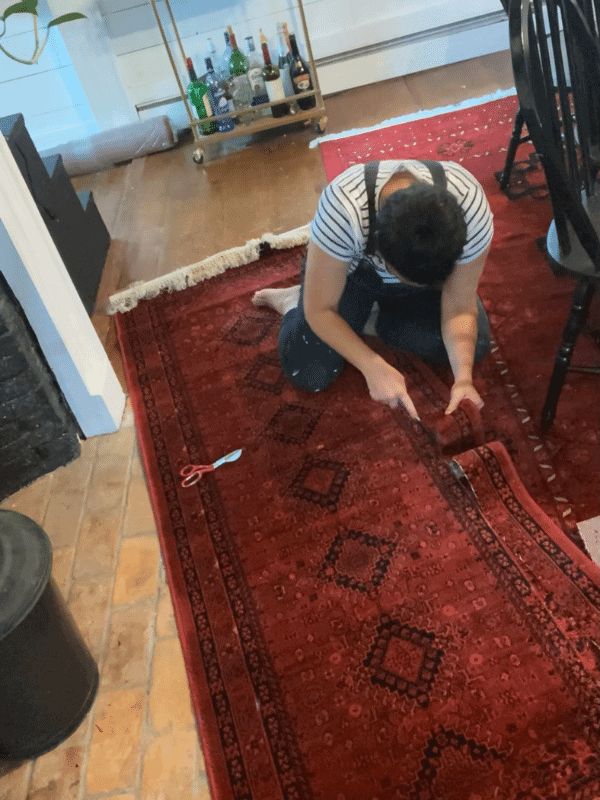
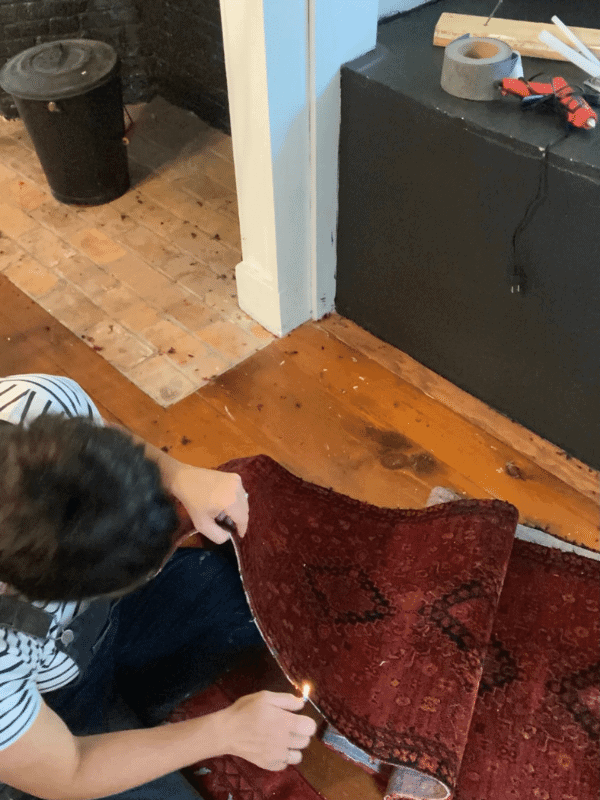
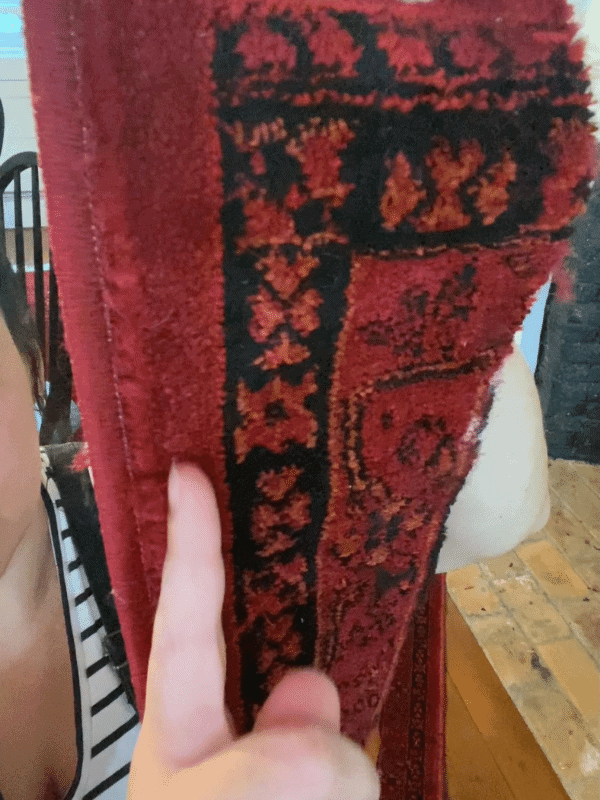
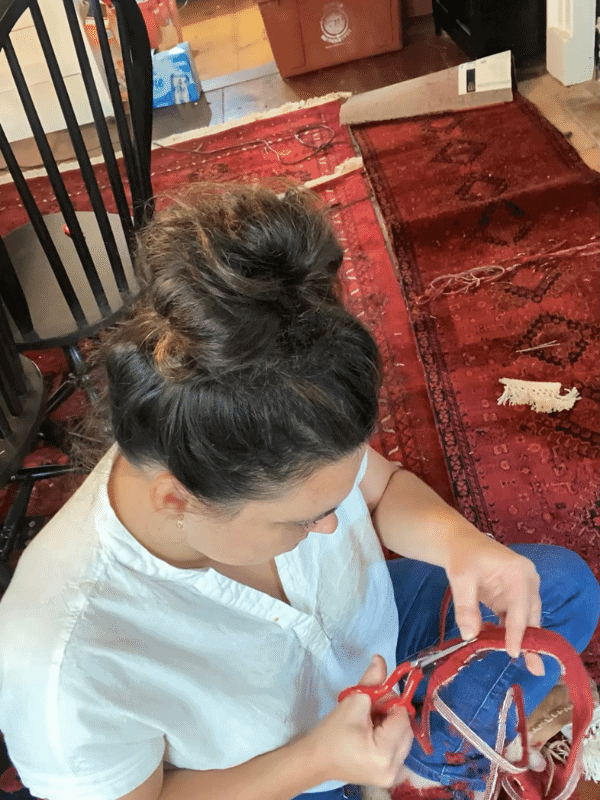
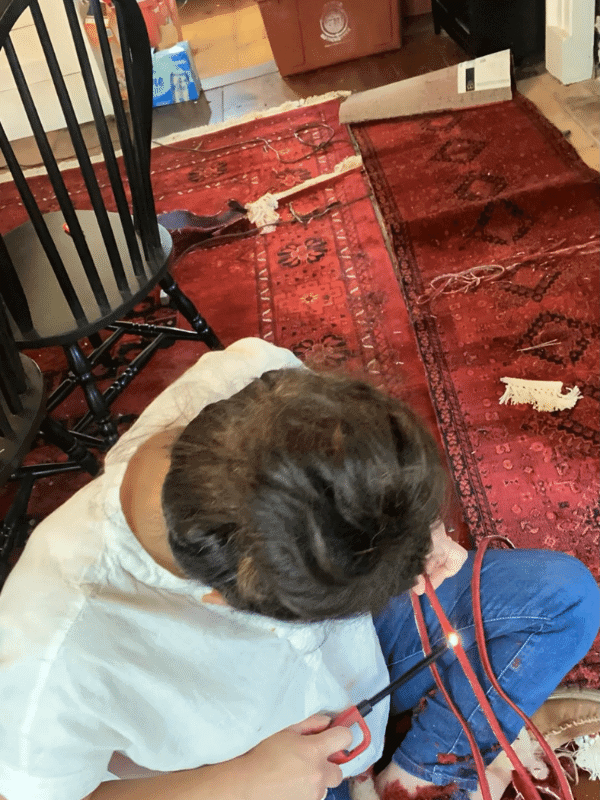
Attaching double-sided carpet tape to the carpet runner
If you opt to use a self-adhesive binding strip, you’ll have to begin by peeling back one side of the double-sided carpet tape and attach the edge of the entire length of carpet.
If not, Then you’ll need to attach both the tape and the binding. Start by placing a roll of the carpet tape under the edge of the carpet.
Then little by little, peel back the tape and slowly press the carpet edge into the tape. Be sure to make sure the carpet edge is being line up straight.
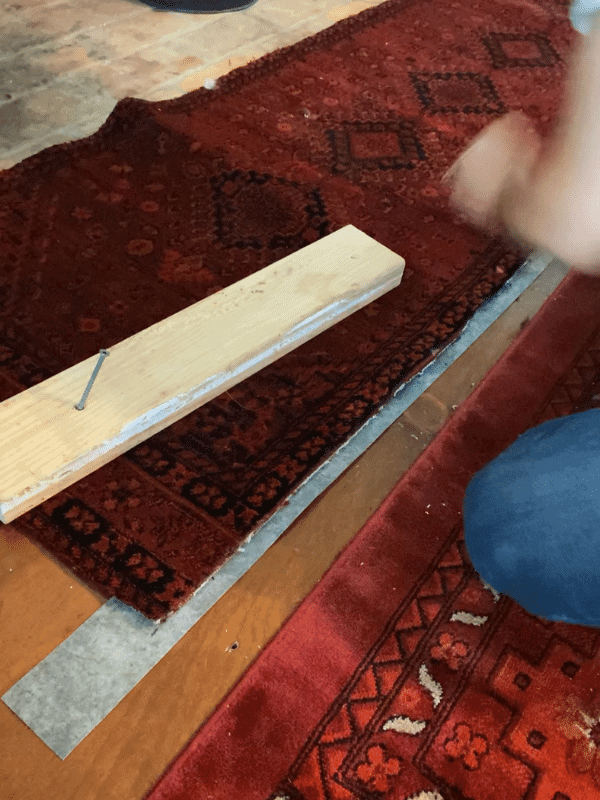
Attaching the binding strips to the carpet edges
Begin by trimming the starting point of the binding strip to ensure that it’s unfrayed and straight. I ran my lighter up the edge once trimmed. Next, press the binding strip to the tape. Push the strip as close to the edge of the carpet as you can.
If done properly, the meeting point will hardly be noticeable. Lastly, trim off the excess tape of your newly bound carpet.
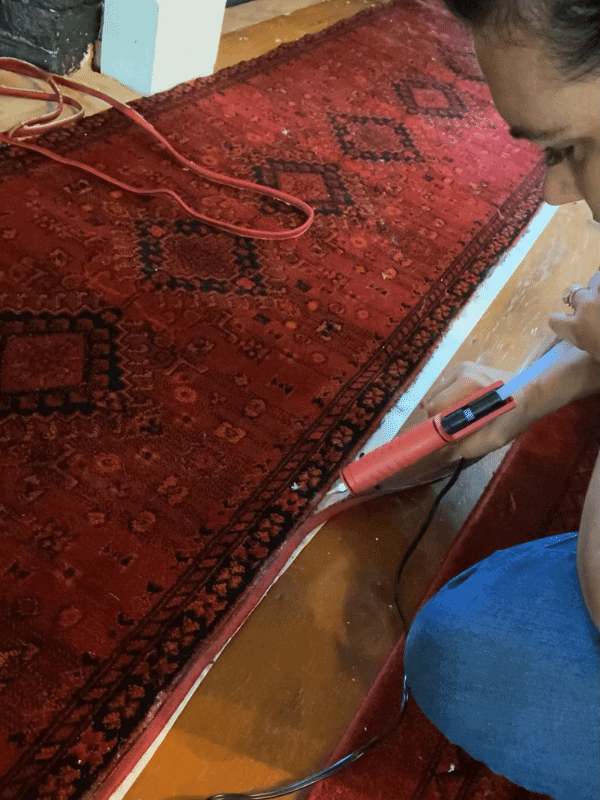
How do you bind a carpet into a rug?
Re-binding the edge of a carpet is pretty much the same process as binding a carpet runner. The process is the same for larger and smaller rugs.
The only difference is where you start attaching the binding. For a runner you start at the top, but for area rugs you start in the middle.
This makes the area rug seamless instead of having a hard end. With the binding starting at the center, instead of a corner, the meeting point will be minimally visible.
How do you bind a rug without sewing?
The best method to carpet binding is to use a high powered sewing machine. This is traditional binding. But we don’t all have access to such machines or have the talent to take on such a project.
Thank goodness there are other methods. The simplest process is to simply cut the carpet to size, trim down the old binding and re-attach to the raw carpet edges using double sided carpet tape. No sewing needed! All go through the steps in a little more detail below.
- Once your carpet is cut, begin peeling the paper backing off of the adhesive strip and place the sticky section under the center of the rug’s edge, aligning the binder edge with the edge of the carpet.
- Once the carpet and binder strip are aligned, continue to peel the paper backing and stick the adhesive to the back of the carpet, making sure to keep everything straight.
- At this point, it will still be easy to un-peel and restick if necessary, so don’t stress! Take your time to ensure that the edges are lined up properly.
- Once you reach the first corner, do not trim off the binding strip; instead, you will continue to wrap it around the corner to form one continuous line around each edge.
- As you reach each corner, cut a slit that aligns with the carpet edge into the tape portion of the binder strip, careful not to cut into the rope. This way, as you turn the binder strip around the corner, the tape will overlap nicely in the corner instead of crumpling up.
- You can either trim the extra piece of tape off or stick it to the carpet overlapping. Continue this process around all edges and at all corners.
- Once you have wrapped the binder around the entire piece of carpet, carefully cut the end of the strip, using the starting point as a reference.
- Align the endpoints, and seal them together with a small dot of hot glue.
Do you need to Seal the carpet edges
Yes, sealing the edges is important. Once the binding strip has adhered with tape around the entire rug, it’s time to seal the edges of the carpet to the rope edge of the binder. This final step will help to ensure that the rug does not unravel when being walked on or vacuumed.
How do you seal the edges of a carpet remnant?
In six-inch sections, place a thin line of hot glue in the gap between the carpet edge and the rope edge. At this step, you can use a brick or block of wood to help press the seal shut.
To do this, hold the rug in place with your left hand, and use your right hand to apply pressure to the edge using the brick or block. You can also use just your hands!
Apply pressure for about 10-15 seconds before moving on to the next section. Continue around the edges until they are all sealed with hot glue.
The final, optional step is to attach a grippy carpet pad to the underside of the rug. This will prevent your newly resized rug from moving out of place as it’s walked on!
I bet you never realized it could be so quick and easy to bind carpet edges!

Be sure to pin for later!

Want to read more about updating your home on a budget? Check out my post below!
Everything you need to know about how to install a carpet runner
Installing a carpet runner on your stairs is not only a beautiful upgrade but a practical one too! But before you go hiring this job out, consider DIY-ing it yourself. It’s much easier than you think. Here, I’m sharing how to install a carpet runner on your stairs. First…
Thanks for reading!
Chat soon,
Kori


How did it hold up? Has the binding came off or raveled?
Not yet, thank goodness!
By the time you’ve bought the material you’re gluing to the carpet, plus double sided tape, plus hot glue, you’re going to be at or close to the cost of professional binding. Then you’ll have to invest your time attaching it, which will not be insignificant. Add the value of your time to the monetary costs of materials, and you’re paying more for a far inferior DIY hack job than you would taking it to a professional.